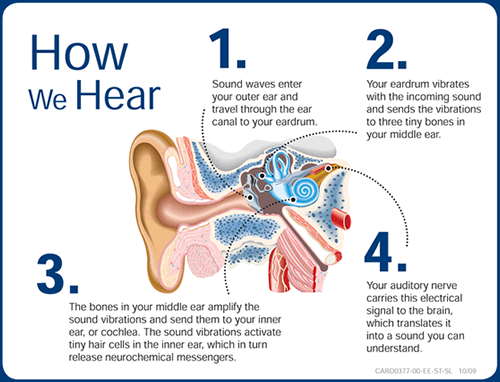Hearing impairment higher among Hispanic/Latino men, older individuals

|
Hearing impairment was more prevalent among men and older individuals in a study of U.S. Hispanic/Latino adults, according to a report published online by JAMA Otolaryngology-Head and Neck Surgery.
Hearing impairment is a common chronic condition that affects adults. Hearing impairment may lead to lower quality of life and is associated with an increased risk for dementia. Most hearing impairment is undiagnosed and untreated.
Karen J. Cruickshanks, Ph.D., of the University of Wisconsin, Madison, and co-authors determined the prevalence of hearing impairment among Hispanic/Latino adults from diverse backgrounds and identified the factors associated with hearing impairment.
The authors used data from the Hispanic Community Health Study/Study of Latinos, a population-based sample of Hispanic/Latinos from New York, Chicago, Miami, and San Diego, Calif. The study examined 16,415 self-identified Hispanic/Latino individuals who were between the ages of 18 and 74.
Overall, the study found 15 percent of participants had hearing impairment and about half of them (8.24 percent) had hearing loss in both ears (bilateral hearing impairment). In general, the prevalence of hearing impairment was higher among men and adults 45 and older. Among people 45 and older, hearing impairment was higher ranging by Hispanic/Latino background from 29.35 percent for men with Dominican background to 41.20 percent for Puerto Rican men, and from 17.89 percent for women of Mexican background to 32.11 percent for women reporting a mixed Hispanic/Latino background. The odds of hearing impairment were lower if individuals were more educated and had higher incomes. Also, noise exposure, diabetes and prediabetes were associated with hearing impairment, according to the results.
‘Future longitudinal studies of Hispanics/Latinos from diverse backgrounds could strengthen the determination of the risks associated with hearing loss. This longitudinal information is needed to identify modifiable risk factors to slow the progression of hearing loss with aging and to develop culturally appropriate effective intervention strategies to meet the communication needs of the Hispanic/Latino community,’ the study concludes.
###
(JAMA Otolaryngol Head Neck Surg. Published online May 28, 2015. doi:10.1001/.jamaoto.2015.0889. Available pre-embargo to the media at http://media.jamanetwork.com.)
Editor’s Note: this study includes funding/support disclosures. Please see article for additional information, including other authors, author contributions and affiliations, financial disclosures, funding and support, etc.
To contact corresponding author Karen J. Cruickshanks, Ph.D., call:
Emily Kumlien
.(JavaScript must be enabled to view this email address)
608-265-8199
To place an electronic embedded link to this study in your story (links will be live at the embargo time): http://archotol.jamanetwork.com/article.aspx?doi=10.1001/jamaoto.2015.0889
###
Emily Kumlien
.(JavaScript must be enabled to view this email address)
608-265-8199
The JAMA Network Journals
Print Version
Tell-a-Friend comments powered by Disqus





